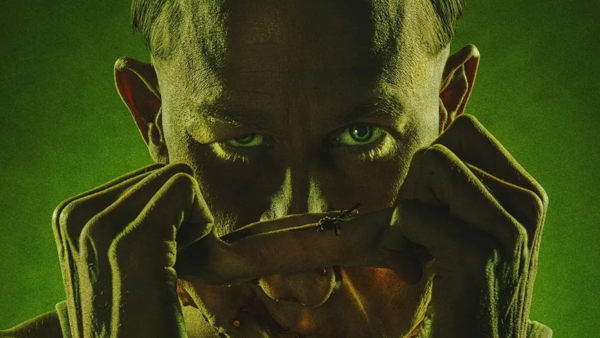The novel “Psycho” (1959) and Alfred Hitchcock’s film are distorting mirrors of a criminal reality. Today in 2025, the TV show “Monster the Ed Gein story” takes up this immense classic of cinema and stages the personality at its origin, as the construction of another set of mirrors of historical facts, crimes and works of art. It seems important to perceive the extent of these distortions in the artistic construction, and their significance. Is this season 3 of the Monster series a historical documentary or a fiction, what is the significance of the distortions of history to which it proceeds? What construction of the image of women are we dealing with, and what is the clearly misogynistic scope of these alterations?
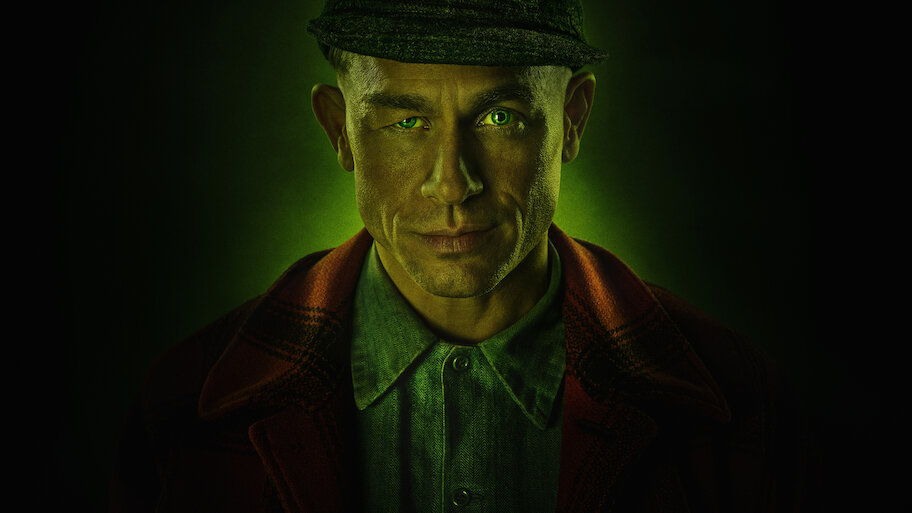
Warning : the following contains major spoilings !
1 – Staging the horror
Robert Bloch is a fantasy writer who began his career at a very young age, in the 1930s, and became a regular correspondent of H.P. Lovecraft. While they dedicated one of their short stories to each other, depicting their own murder by monsters from outer space, Bloch’s writings evolved into a horror of a different kind in the 1950s. The monsters become purely human for a crime plot inspired by some of the most sordid “news stories.”
“The real horror is not in the shadows, but in that twisted little world inside our own skulls”
Thus, the Ed Gein case in Plainsfield, Wisconsin (1957), not far from Weyauwega where Bloch lived, almost immediately gave rise to a novel, Psycho (1959), which contains a large part of fiction and therefore does not at all report the real personality of Ed Gein:
“The real-life murderer was not the role model for my character Norman Bates. Ed Gein didn’t own or operate a motel. Ed Gein didn’t kill anyone in the shower. Ed Gein wasn’t into taxidermy. Ed Gein didn’t stuff his mother, keep her body in the house, dress in a drag outfit, or adopt an alternative personality. These were the functions and characteristics of Norman Bates, and Norman Bates didn’t exist until I made him up. Out of my own imagination, I add, which is probably the reason so few offer to take showers with me” ( https://en.wikipedia.org/wiki/Robert_Bloch )
The film adaptation, which meticulously follows the plot of the novel, will lead Alfred Hitchcock to the height of his career, for one of his most famous films. We know the success, but above all the immense legacy of “Psycho” (1960) in what are today the cinematic representations of crime and violence.
Episode 2 of the Monster series features two interviews between Alfred Hitchcock, in the process of conceiving his next film, and Robert Bloch. They explicitly discuss this transformation of the staging of horror towards pure humanity, but also, and perhaps most importantly, the role of representation in the traumatic constitution of a criminal personality like Ed Gein’s. It was photos of the horror of the concentration camps that triggered his criminality. Even certain tribal practices discovered during colonial expansion, taught in primary school, are mentioned as source of trauma.
Let’s note Mrs. Hitchcock’s somewhat angry objection concerning the exhumation of corpses, which does not fit at all into this set of representations… We should also note Hitchcock’s insistence on knowing what Robert Bloch finds most shocking in Ed Gein’s crimes. His project is precisely to construct a representation of them by bringing Bloch’s to the screen, in the most disturbing way possible for the spectator.
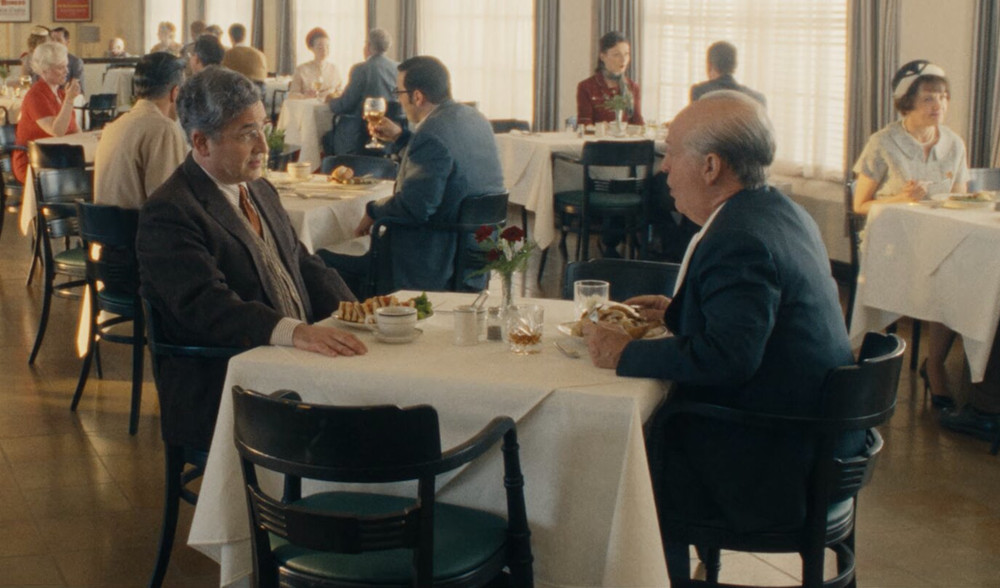
2 – Distorting mirrors and voyeurism
To do this, Hitchcock will look for an actor whose inner turmoil will be comparable to that of the criminal he wants to portray. This is how Anthony Perkins will become this fictional Ed Gain named Norman Bates, condemning him to remain a prisoner of the distorted image of an unreal criminal. His image will stay locked in the reflection of another on the basis of intimate perversions that presided over his choice as an actor. Hitchcock is very clear on this subject. Whatever the ways in which Anthony Perkins struggles with his homosexuality (Mildred Newman ‘s “therapies” are staged), the actor remains locked inside this distorted reflect named Norman Bates…
It is very clear that the model for all these reflections, Ed Gein, is neither homosexual nor transsexual. Certainly, the scenes of cross-dressing in the series are not lacking and are even paroxysmal since he will go so far as to wear female masks made from the faces of exhumed corpses or his victims. However, even if we have indeed found journals at his home which attest to Gein’s interest in Christine Jorgensen and the surgery which transformed her body, the psychiatric interpretation has nothing to do with that. Christine Jorgensen will be very clear (even if the interview which takes place at the end of the series is unreal).
“I don’t think you and I are alike at all. The transexual is rarely the perpetrator of violence, Mr. Gein. We are far more likely to be the victims of violence.” (Episode 7, 35’20)
Hitchcock’s fictional Ed Gein, named Norman Bates, thus seems a more than distorted reflection, and Anthony Perkins anything but a kind of double sharing the same fantasies.
The main mirror with the movie that the series offers is that of the unmissable shower scene. Everything has been said about it, as well as its immense influence on the representation of violence, in cinema and therefore in the collective imagination, given the resounding success of this film. The Monster series could not ignore this scene. So directors Ian Brennan and Max Winkler chose to distort it by emphasizing almost exclusively what the original version does not show: the blood and the stabbing. Hitchcock’s greatness is perhaps measured in the near absence of these. Psycho lacks the vision of the murderous blows, which are suggested with enough evidence for the viewer’s imagination to do the work.
The mirror version of the scene in the Monster series shows the significant evolution of the visual representation of crime, more than 60 years later: we see all the blows and the streams of blood… It is perhaps even what today’s viewer expects, an explicit vision of criminal horror that no longer suggests anything. Hitchcock’s legacy, successors of this movie, have passed through this, with The Texas Chainsaw Massacre and The Silence of the Lambsthat the series carefully stages. On-screen violence has evolved since the original act of the shower scene in Psycho. Alfred Hitchcock himself is well aware of the consequences of his creation on the subsequent evolution of cinema, which he himself transformed, with no possibility of going back. The end of episode 3 shows this, as the question he faces : what he will be able to film now that he has transformed the audience?
Actress Suzanna Son, a mirror image of original actress Janet Leigh in the shower, is the main female character in the series, as she also plays Adeline Watkins. This scene is now isolated from any plot, its unfolding suggested to take place in Adeline’s house and not in a motel room. Isn’t watching a woman in the shower the very epitome of voyeurism? What did viewers paid their movie tickets for?
Episode 1 already begins with Ed Gein’s voyeurism, as he sneaks into Adeline Watkins’s house to watch her in her underwear, and then runs away. The mirrors of voyeurism are multiplied in episode 2, with the well-known song I’ll Be Seeing You playing in the background. First, another, altogether innocent, glance from Ed Gein is shown, through the keyhole of Adeline’s front door (not her bedroom this time). He overhears the young girl arguing with her mother about him. He leaves and leaves his flowers gift on the porch, which is a credit to his discretion. These scenes are clearly fictional.
A more guilty and this time real voyeurism follows, that of Hitchcock himself. At first, he’s at home, looking through a hole in the wall that he carefully conceals. His wife is putting on the same green underwear that Ed Gein fantasizes about so much. Then Hitchcock looks through another hole, this time in the wall of the cinema, staring at the audience’s reactions to the shower scene. First, his wife (whom he calls mother) leaves the room, apparently outraged but not shocked, in keeping with her judgment of her husband’s work. Then follow the spectators, all deeply affected by such violence, of which they have been voyeurs, to the great pleasure of the filmmaker who contemplates them.
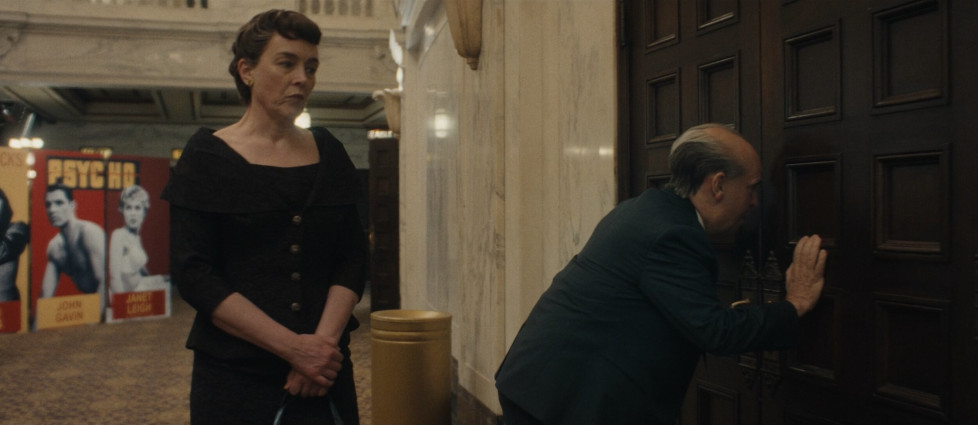
The most culpable voyeurism, then, is not that of the criminal who inspires all this horror: this is what the series suggests, by putting in parallel the voyeurism of the fictional Ed Gein and the real Hitchcock.
How is this character of Ed Gein constructed, with what general representation of women?
3 – Adeline Watkins and the image of women in the series “Monster”
This series features a considerable number of women beyond the victims, and the least we can say is that they are not all very likeable despite their differences.
Could Ed Gein have been someone else, or did he only become this criminal because of his mother? The first episode gives us a set of elements, but Augusta Gein’s personality is described in a damning manner, as is the education she gives her son. Every woman is a “Jezebel,” tempting, obscene, and diabolical, and Ed must have no relationship with any of them. This is the speech the mother gives to her naked son, after having surprised him in his underwear masturbating. Mrs. Gein would probably have wanted a girl more than two boys…
It is therefore not surprising that he manages to try to approach two young girls in the village bar only in a… “clumsy” way. He has later a meeting in this bar with Adeline Watkins, who offers him a set of photos of the horror of the Nazi camps as well as a (fictitious) comic strip of the “exploits” of Ilse Koch , the “Beast of Buchenwald”. Koch will appear repeatedly in fantasized scenes, in particular during the murder of Mary Hogan which is staged as a vast hallucination. These elements are fictional, introduced into the series to build a character who perhaps fills certain mysteries, but at the cost of what we know to be the truth :
“But there is no actual evidence that Gein was in any way “inspired by” Koch or any of the Nazis for his own grisly murders and human taxidermy”
The comics Watkins offers Gein are clearly modern; they are not comics from the 1950s. The photos of the camps, however, seem quite authentic.
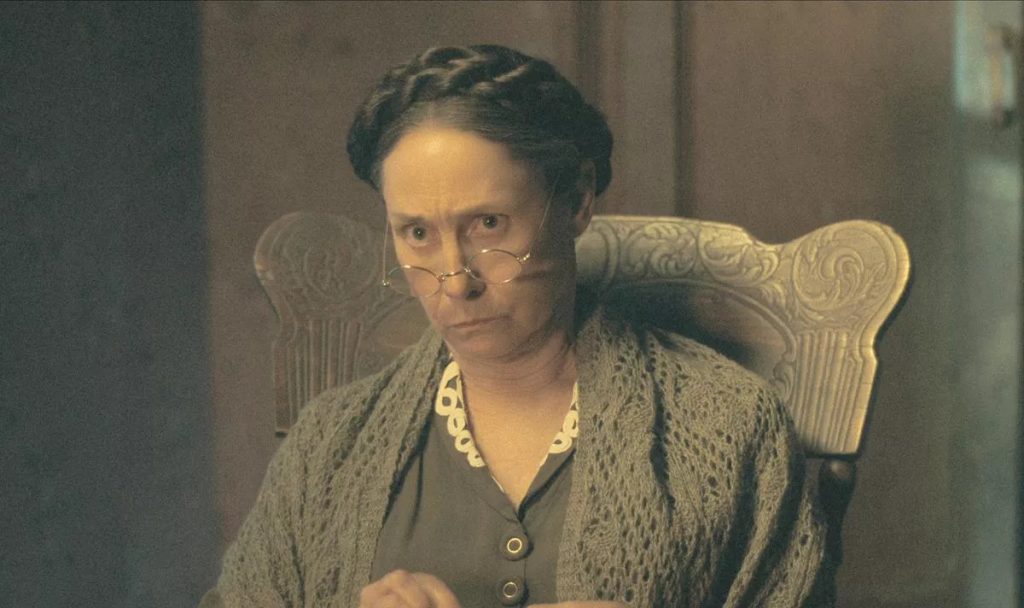
Contact with traumatic scenes creates a criminal personality, as we saw during Hitchcock’s interview with Robert Bloch. If we accept this theory, it is clear that the cause of Gein’s crimes is indeed Watkins, who tells him just before handing over the photos and magazines that they are “both weird.” She will confirm this later, when she convicts Gein of stealing her underwear.
“- There’s something real dark about you Eddie Gein
– Well, it takes one to know one
– You’re right about that” (Episode 4, 4’49)
Adeline Watkins’ character is absolutely central. Episode 5 (Ice) is almost entirely devoted to her. We see her confronted with other women in an attempt to socialize, like this club of housewives who meet to take cooking lessons with Eleanor Adams. She didn’t share Ed Gein’s meal (who apparently eats from skulls…) because of this meeting, but she also doesn’t eat at Mrs. Adams’s house, where she clearly doesn’t belong and feels like an outsider. She will cause a considerable scandal by reminding her that her son is a rapist, and will come dressed in red to her funeral a few days later.
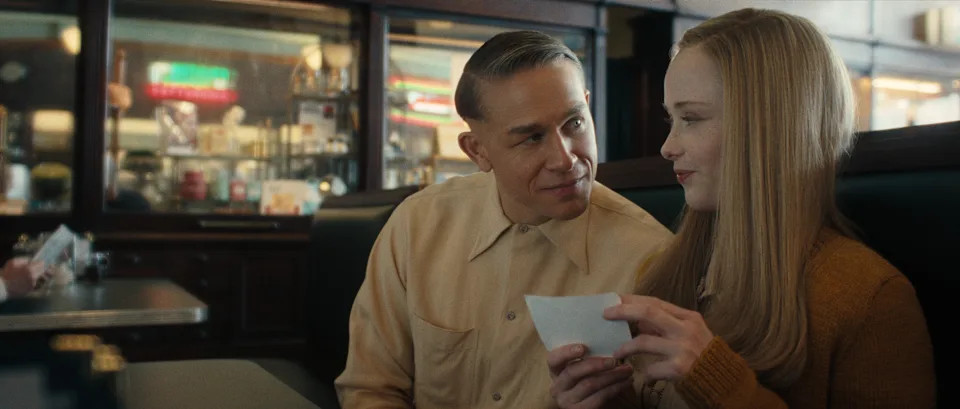
Adeline will decide to try her luck as a photographer in New York, and will declare during the last visit of her friend Suzette (perhaps the only apparently nice woman in the entire episode) that she is not sophisticated enough for her and the big city. During her farewell visit to Gein, she will encourage him to necrophilia (on the person of Mrs. Adams) to fill her absence:
” – Maybe you should do it with someone who can’t say no. Somebody dead.
– Yeah, I thought about that. I couldn’t go through with it.
– Why not? Oh Eddie they’re dead, so it doesn’t matter” (Episode 5, 16’34”)
But her attempts at a career in New York would end in considerable personal failure. Her trip was intended to meet the photographer Ascher Fellig, Weegee, whose assistant she sought. He would violently reject her, blaming her for her harassment by mail but especially for mistaking her photos of cut-up corpses for crude fakes (which they were not…).
Back in Plainsfield, her mother will tell her that she is a failure, never wanted her and tried to induce a miscarriage numerous times. “This idea you’re a failure, of course this is all true” (Episode 5 39’53”)
Immersed in this snowy world, after staying in a freezing New York apartment where she probably murders the owner, Adeline Watkins will end up offering herself to Ed Gein who will only be able to desire her cold, plunged into the bathtub of ice which closes the episode.
We see Adeline Atkins twice after the arrest of the “Butcher of Plainfield.” First, she denies any in-depth relationship with the criminal in front of a crowd of journalists gathered outside her home. All while attempting to promote herself. The show’s writers don’t credit her with the statements, which were nevertheless reported as authentic at the time in the media. Then, she then attempts to pass herself off as a journalist in order to gather the impressions of Bernice Worden’s son after the funeral service.
Finally, she will visit her old friend years later, when he is dying in an insane asylum. It is a sick Ed Gein, in a wheelchair, but very peaceful, who will regret without real reproach that Adeline did not accompany him during his ordeals, at least with a visit. She will tell him about his plans for murder, and he will leave her, telling her that he loves her, to which she only responds with assent even if she shows some signs of emotion.
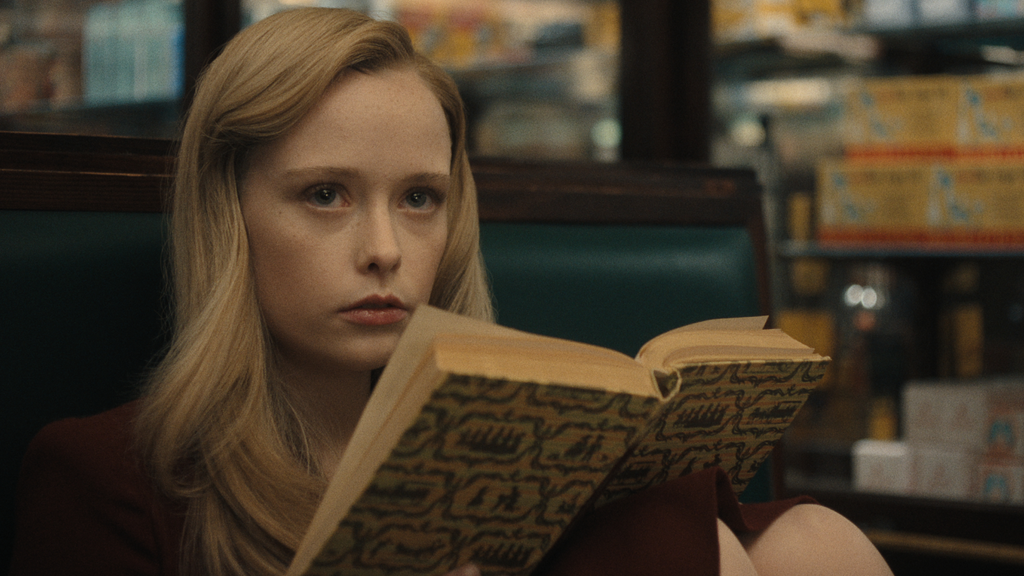
4 – Staging of redemption
What’s authentic about this key character of Adeline Watkins? From what we know, very little. It’s a construct that allows the show’s writers to mitigate the responsibility of the real criminal. Max Winkler is very clear about his perception of Ed Gein’s real character:
This poor man, who had undiagnosed schizophrenia in these giant sweeping landscapes with just the wind and frozen corn, and no one to talk to, an abusive mother, a brother who’s out on the lam. Those landscapes (…) were really important to us, just feeling the vastness of how small he is, and yet when you’re in his head, how loud his brain is. (…)
I did have empathy for Ed Gein when I did research and understood the kind of abuse he had endured, the generational trauma he had endured, and how lonely it must feel to have these voices in your head and not know where they’re coming from or who to talk to about it.
This fictional construction continues in the mode of the redemption of a very altered mirror of Ed Gein who helps the police identify a criminal, from his detention in an asylum. This redemption continues in the images that conclude these 8 episodes, which depict the butcher of Plainfield who is, after all, quite likeable. A bit like a big child who only asks to be pampered by his mother. We would end up forgetting to what extent this character, like others and in particular that of Adeline Atkins, have nothing real, to what extent we have shifted from historical investigation to pure fiction.
Six murders are attributed to Ed Gein in the series: fictionally, his own brother, perhaps accidentally (episode 1) and two lost hunters (Victor Harold Travis and Raymond Burgess) who surprise him at work in his “workshop” and whom he pursues into the woods with a chainsaw (episode 4). Child murders have been committed for which Gein is suspected, the series exonerates him of these crimes with an unusual if not questionable macabre humor. We see him relieve himself if not take revenge on the disabled babysitter Evelyn Grace Hartley (episode 3). Two murders are, however, well proven and admitted by Gein: Mary Hogan, owner of a bar (episode 2) and Bernice Worden, owner of a supply store (episode 4). He concludes these two murders by robbing the cash register, and taking the corpses to dismember them.
That the images and scenes are shocking is a fact, Ian Brennan and Max Winkler are undeniably good heirs to the work of Alfred Hitchcock and his successors. The direction of all the episodes as well as the acting are in every way remarkable for a completely captivating story. Its fragmentation and the multiplication of characters, with the staging of historical figures like Robert Bloch, beyond Hitchcock and Anthony Perkins, do not harm the follow-up of an extremely well-conducted plot, even if some critics could reproach the series for this.
Let us return, however, to the moment when Mrs. Hitchcock leaves the meal with Robert Bloch in a very bad mood, when Ed Gein’s necrophilia is mentioned. The most disturbing thing, not in terms of the staging or the imagination, but in terms of the taking of sides, is indeed elsewhere. That the meaning of all this fiction consists of understanding a criminal, fine. As for reducing his responsibility, that is debatable in view of what he is clearly guilty of, even for a mentally ill person. That this is done by means of a clearly and constantly misogynistic fictional construction is way much harder to bear.
The Bates Motel series (2013–2017) remains purely fictional and strives to build characters in a much more nuanced way, starting with Norman Bates’s mother, remarkably portrayed by Vera Farmiga. This approach seems to us to be much preferable to the exhumation of a particularly sordid murderer whose questionable portrait is drawn to the detriment of the image of his main victim: the woman.
Yves Potin 2025
